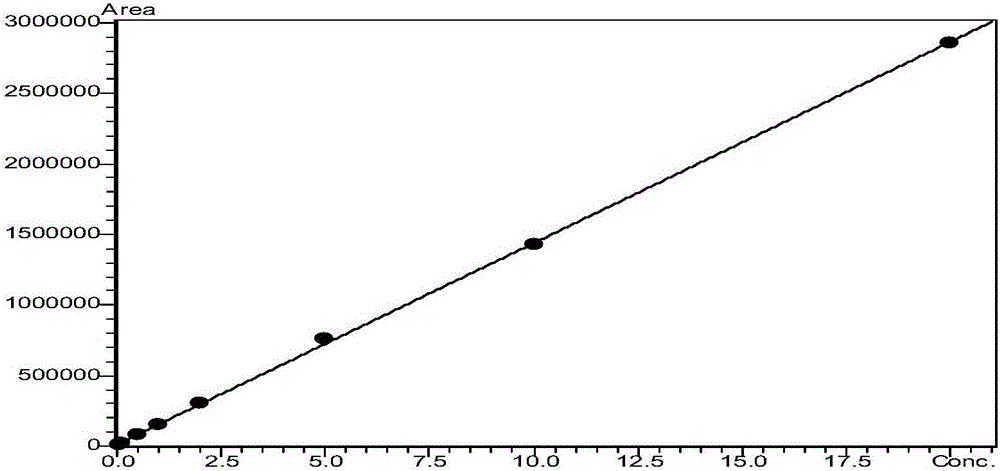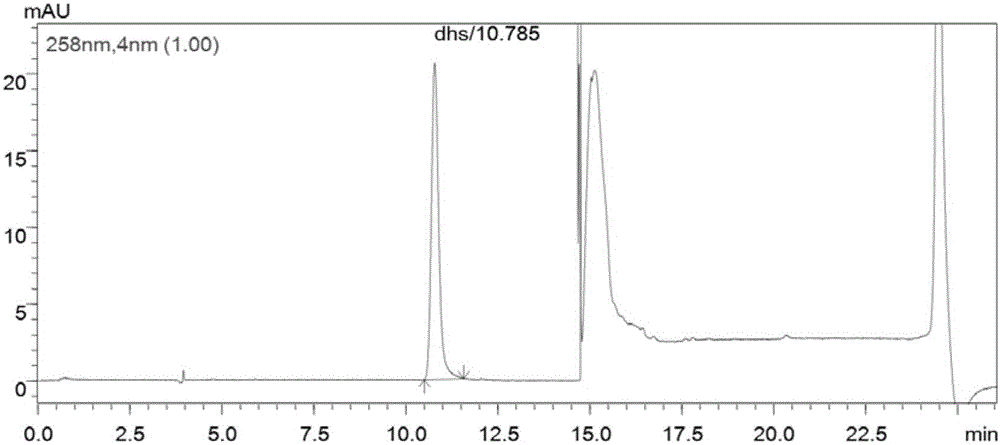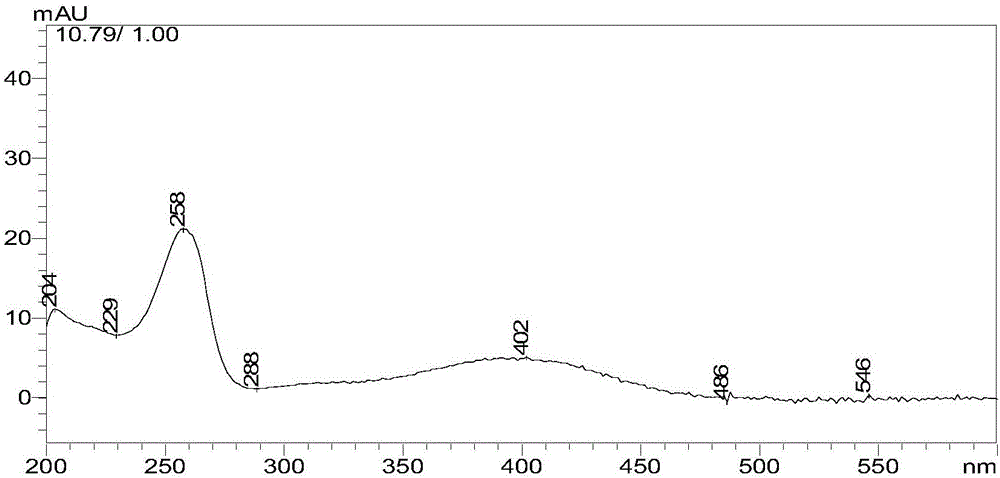Method for detecting toxoflavin in foodstuff based on multifunctional purifying column-high performance liquid chromatography
A technology of high-performance liquid chromatography and multi-functional purification column, which is applied in the direction of measuring devices, instruments, scientific instruments, etc., to achieve high detection efficiency, easy promotion and application, and good purification effect
- Summary
- Abstract
- Description
- Claims
- Application Information
AI Technical Summary
Problems solved by technology
Method used
Image
Examples
Embodiment 1
[0033] Embodiment 1: Draw the calibration curve of response peak area-toxoflavin concentration.
[0034] (1) Weigh 0.0100g of toxin standard product into a 10mL volumetric flask, dissolve in methanol, set the volume to the mark, and prepare a 1.0mg / mL standard mother solution. Stored in -18°C refrigerator, it can be stored for 3 months. Before use, take it out and let it stand at room temperature, take 200μL of the standard mother solution in a 10mL volumetric flask, dilute to the mark with water, shake well, and prepare a 20.0μg / ml intermediate solution for use. Take 25μL, 50μL, 100μL, 200μL, 500μL, 1.0mL intermediate use solution and 50μL, 100μL standard mother solution in 10mL volume, and dilute water to the mark. Prepare a series of standard solutions with concentrations of 0.05, 0.1, 0.2, 0.4, 1.0, 2.0, 5.0, and 10.0 μg / ml.
[0035] At the same time, this part optimizes the constant volume solution, and compares the influence of different volume fractions of methanol wa...
Embodiment 2
[0037] Embodiment 2: The present embodiment detects toxanthin in fermented cornmeal by the following method:
[0038] (1) Sample extraction conditions: Weigh 20-25 g of sample and mix with 100 mL of extract (80 acetonitrile + 20 water), ultrasonically extract for 30 min, take the extract, and centrifuge at 5000 r / min for 5 min to obtain supernatant.
[0039] (2) Sample purification: Take 10 mL of the supernatant obtained in step 1, and use a multifunctional purification column for purification; after purification, take 5.0 mL of the purification solution and use N 2 Blow dry, then dilute to volume with 1.0mL pure water, vortex to dissolve to obtain supernatant solution.
[0040] (3) Chromatographic analysis conditions: the upper machine liquid obtained in step 2 is subjected to chromatographic analysis through a quaternary low-pressure or binary high-pressure liquid chromatography system equipped with a DAD detector, chromatographic column: ODS reverse-phase chromatographic colu...
Embodiment 3
[0043] Example 3: In this example, in Example 2, a positive fermented cornmeal sample was prepared by adding toxin standard substance into cornmeal at the same time, and the same method was used for detection. Wherein in step 1, this part has carried out the test to extraction reagent, has selected methanol water ( Figure 9 ), 70% ethanol water ( Figure 10 ) and 70% acetonitrile water ( Figure 11 ), to investigate the influence of different organic solvents on the extraction efficiency and the effect of purification and recovery on the multifunctional purification column. Among them, the influence of different organic solvents on the extraction efficiency was obtained by extracting the positive corn fermented noodles, and then taking 3.0ml of the extract solution to be directly dried with N2, dissolved in water and analyzed on the machine, so as to eliminate the influence of recovery rate caused by column purification. In addition, each part of the extract was purified by...
PUM
 Login to View More
Login to View More Abstract
Description
Claims
Application Information
 Login to View More
Login to View More - R&D
- Intellectual Property
- Life Sciences
- Materials
- Tech Scout
- Unparalleled Data Quality
- Higher Quality Content
- 60% Fewer Hallucinations
Browse by: Latest US Patents, China's latest patents, Technical Efficacy Thesaurus, Application Domain, Technology Topic, Popular Technical Reports.
© 2025 PatSnap. All rights reserved.Legal|Privacy policy|Modern Slavery Act Transparency Statement|Sitemap|About US| Contact US: help@patsnap.com



